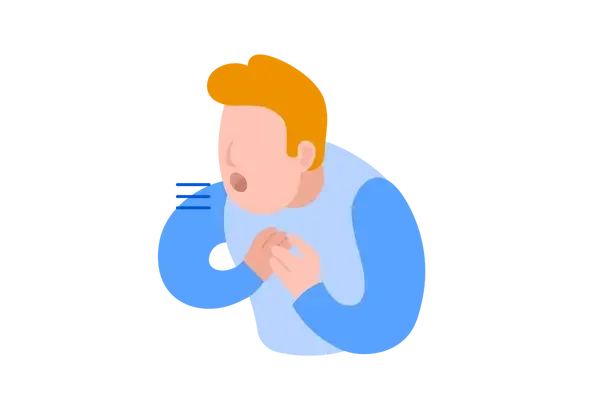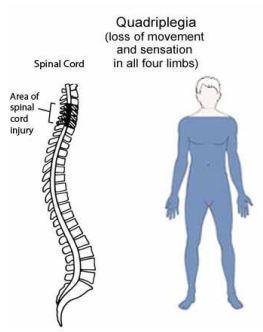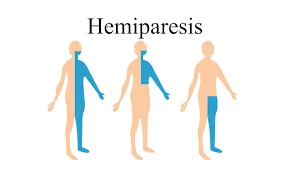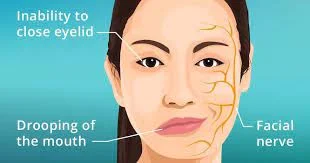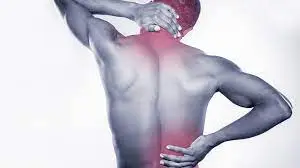Wheezing
- Wheezing is the shrill whistle or coarse rattle you hear when your airway is partially choked. It might be choked because of an allergic reaction, a cold, bronchitis, or allergies. Wheezing is a symptom of asthma, pneumonia, heart failure, and more. It could go away on its own, or it could be a sign of a severe condition.
- Wheezing is a high-pitched whistling sound that can occur when you breathe. It is caused by narrowed airways or inflammation.
- Wheezing is a symptom of a certain different medical condition. While some of these issues are temporary (like allergies), others can be quite serious and need medical attention.
Table of Contents
What is wheezing?
- Wheezing is the shrill, coarse whistling or rattling sound your breath creates when your airway is partially blocked.
- Some wheezes can only be heard with a stethoscope, yet often they can be heard with the human ear. Wheezing is more obvious when you breathe out (exhale), yet can also be heard when you breathe in (inhale). The tone of the wheeze can differ depending on which part of the respiratory system is blocked or narrowed. Narrowing in the upper respiratory system may create a hoarser wheeze. Lower obstructions may have a more musical tone, similar to how a wind instrument such as a clarinet might sound.
- Anyone – from infants to elderly adults – can create wheezing. Children with asthma often develop it. Wheezing is also quite usual in infants, it is estimated that up to 25% to 30% of infants develop wheezing in their first year of life.
- Wheezing may be more usual in babies because of their smaller airways. Also, children under two are susceptible to a common, yet easily treatable condition called bronchiolitis. This is because of a viral respiratory infection and inflammation. In adults, smokers and people with emphysema or heart failure (HF) are most prone to wheezing.
What causes wheezing?
- Wheezing is commonly caused by an obstruction (blockage) or narrowing of the small bronchial tubes in the chest. It can be caused by an obstruction in the larger airways or vocal cords. One of the most common causes of wheezing is asthma, which is when there is swelling or narrowing of the throat or the airways to your lungs. Yet wheezing can be caused by a variety of other issues. The causes range from chronic (long-term), commonly manageable conditions such as asthma, to very serious conditions that include heart failure. The most usual causes of wheezing include problems with your:
Lungs
- Asthma is a chronic lung disease that causes spasms & swelling in the bronchial tubes. Wheezing in asthma can be triggered by exposure to airborne allergens like pollen, mold, animals, or house dust. Viral illnesses can also create asthma symptoms worse.
- Bronchitis: infection of the lining of the bronchial tubes.
- Bronchiolitis: is most usual in young children.
- Chronic obstructive pulmonary disorder (COPD): is chronic obstructive pulmonary disorder (COPD), a long-term inflammation and damage of the bronchial tube lining, most commonly from smoking cigarettes.
- Cystic fibrosis (CF): In people who have Cystic fibrosis (CF), thick mucus clogs the airways and makes breathing difficult.
- Pneumonia: It is an infection of the lungs caused by a bacteria or virus.
- Respiratory Syncytial Virus (RSV): is a seasonal lung infection that can conduct to bronchiolitis or pneumonia.
- Aspirating: (breathing) a foreign object into the lungs.
- Chronic obstructive pulmonary disease (COPD) is the blanket term for specific lung diseases, involving emphysema (which is damaged air sacs in the lungs) and chronic bronchitis (inflammation of the lungs). Most people with Chronic obstructive pulmonary disease (COPD) are older and are living with it due to smoking.
- Wheezing and breathlessness are two symptoms of Chronic obstructive pulmonary disease (COPD).
- Cystic fibrosis (CF): In people who have Cystic fibrosis (CF), thick mucus clogs the airways and makes breathing difficult. Cystic fibrosis is a disease that harms the exocrine glands and can cause fluid buildup in the lungs. A symptom of this is wheezing.
- Bronchitis, which is an infection in the important airways of the lungs, can cause wheezing. Wheezing is a symptom of pneumonia, an infection in the tissue of the lungs.
Vocal cords
- Vocal cord dysfunction (VSD): Vocal cord dysfunction (VCD) causes your vocal cords to close instead of opening up when you breathe in and out, making it harder to require air into or out of your lungs.
- Vocal cord dysfunction (VCD), which is often confused with asthma, is a condition in which the vocal cords do not open correctly.
Certain symptoms of this issue are:
- wheezing,
- coughing,
- difficulty breathing.
The digestive tract
GERD: Chronic acid reflux can relax the decreased esophageal valve, causing wheezing.
- Gastroesophageal reflux disease (GERD), which is chronic acid reflux, is sometimes closely associated with asthma. This chronic acid reflux can bad asthma symptoms by irritating the airways and lungs. People with both asthma and Gastroesophageal reflux disease (GERD) may notice an increase in their wheezing when their Gastroesophageal reflux disease (GERD) flares up.
Allergies
- Allergies: triggered by allergens like dust mites, pollens, pets, mold spores, and foods.
- Anaphylaxis: an acute (serious) allergic reaction caused by foods or insect stings.
- Even if you do not have asthma, allergies can cause you to feel like you are short of breath. They can cause wheezing. The allergy symptoms you experience depend on the type of thing you are allergic to, such as pollen or pet dander.
- Anaphylaxis, which is an acute and serious allergic reaction, may reason wheezing. Anaphylaxis is a medical emergency.
You should call 911 or your local emergency services if you start to experience anaphylaxis symptoms, such as:
- dizziness,
- swollen tongue or throat,
- trouble breathing.
Heart conditions
- Heart failure (HF): Cardiac asthma is from fluid in the lungs caused by left heart failure (HF).
- Heart failure can reason wheezing or a “breathless” feeling. This wheezing is commonly caused by fluid buildup in the lungs.
Lifestyle choices
- Smoking: increases your risk of developing chronic obstructive pulmonary disorder (COPD) and emphysema. Smoking and secondhand smoke create asthma harder to control.
Smoking can:
- Bad asthma symptoms
- Increase your risk of developing chronic obstructive pulmonary disorder (COPD)
- Cause coughing & wheezing.
Wheezing in these cases is greatly managed by treating the underlying conditions.
If you develop wheezing, call your healthcare provider (doctor) as soon as possible. If you are experiencing wheezing along with severe shortness of breath or a blue tinge to your skin, seek health care right away.
Risk factors for wheezing
- Wheezing can occur to anyone. However, certain risk factors can improve your chances of developing a wheeze. Hereditary illnesses, like asthma, can run in families.
Wheezing can also happen in:
- people with lung cancer
- toddlers in daycare or with older siblings, due to the increased, exposureTrusted Source to infections
- past and current smokers.
- Avoiding risk factors, such as smoking, may assist improve wheezing. You should stay away from triggers that create you wheeze, such as pollen and another allergen, when possible.
How is wheezing treated?
- Your treatment for wheezing turns on its underlying cause. If wheezing is severe or interfering with breathing, you may require to be hospitalized until your breathing improves.
- Asthma: If your wheezing is caused by asthma, you will likely be prescribed a type of inhaler to reduce inflammation and open your airways (a bronchodilator, for example). Inhaled corticosteroids and pills like montelukast (Singulair) are anti-inflammatory medicines used to treat asthma.
- Bronchitis: If your doctor (provider) determines bronchitis is causing your wheezing, you may be prescribed a bronchodilator such as albuterol (Proair HFA, Proventil HFA, Ventolin HFA) or an antibiotic to heal a bacterial infection. This should assist you to breathe better as you recover.
- Other causes of wheezing may require special treatments. Your doctor will prescribe a plan to treat the underlying cause of your condition, as well as soothe symptoms to assist you to feel better faster.
- Because wheezing is almost always a symptom of an underlying condition, treating it commonly includes treating the condition.
- When it comes to certain lung conditions, prescription anti-inflammatory medications can decrease inflammation and excess mucus in the airways. These medications commonly come in the form of inhalers, yet they are also available as liquid medication used via nebulizers.
Asthma
Asthma cannot be cured, yet it can be managed with:
- quick-relief medications (used at the 1st sign of symptoms, such as wheezing),
- controller medications (which work on relieving swelling and mucus in airways),
- biologics (for people with chronic, persistent symptoms).
Bronchitis
- Typically, bronchitis clears up on its own, yet if you develop chronic bronchitis, there are medications that can help. These involve bronchodilators and steroids, which work to extend the airways. They can be held either via an inhaler or pills.
- Mucolytic medications can assist to thin mucus in the lungs so you can cough it up more simply.
Physiotherapy Management
- The majority of patients suffering from asthma will look for physiotherapy for dyspnoea and hyperventilation. Physiotherapists treat asthma in a variety of ways with the aim to increase breathing techniques. Physiotherapy techniques for asthma are in addition to medication and should never be used as a replacement for prescribed medication, however, may decrease the dosage required.
- Breathing Retraining Techniques
Breathing techniques may have more advantages on mild–moderate asthma. The aim of breathing retraining is to normalize breathing patterns by stabilizing respiratory rate and improving expiratory airflow. Instructions are given by the physiotherapist on how to total this technique, with the following components:
- Reducing Breaths Taken (Reducing Respiratory Rate),
- Taking little Breaths (Reducing Tidal Volume),
- Deep Breathing (Diaphragmatic breathing through the use of abdominal muscles & lower thoracic chest movement),
- Breathing through the Nose (Nasal Breathing),
- Relaxation (Relaxed, controlled breathing),
- Reducing Air Leaving (Decreased expiratory flow through pursed lip breathing),
- These retraining techniques assist control breathing and reducing airflow, turbulence, hyperinflation, variable breathing pattern, and anxiety.
Buteyko Breathing Technique
- The Buteyko breathing technique is another breathing retraining technique; however, it is specific to decreasing hyperinflation. It was developed based on the theory that asthmatic bronchospasm is caused by hyperventilation, leading to a decrease in PaCO2 and therefore all asthmatic symptoms are due to this.
- The smaller airways induce an “air hunger” causing a switch to mouth-breathing and an increased respiratory rate leading to hyperinflation. Buteyko believes that this hyperinflation then contributes to bronchoconstriction. The Buteyko technique aims to decrease ventilation and subsequently lung volume, as a treatment for asthma and other respiratory diseases. A qualified practitioner is required to train the patient.
- The Buteyko Technique:
- Breathe commonly through the nose for 2-3 mins,
- Breathe out commonly, close your nose with your fingers, and hold
- Evidence number of seconds
- On first required to breathe, release the nose and return to nasal breathing (Control Pause)
- Wait three minutes
- Repeat and hold your breath for as long as viable (Maximum Pause).
- Breathing pattern retraining and relaxed breathing techniques are 2 approaches to physiotherapy management of asthma. The aim of breathing pattern retraining is to create a more efficient pattern of respiration, thereby reducing breathlessness. This is commonly accomplished by slowing the breathing rate and encouraging relaxed, ‘abdominal’ breathing (Bruton, 2006).
- Another potential mechanism for breathing pattern retraining is that by encouraging a longer expiratory time, the effects of any static/ dynamic hyperinflation may be decreased.
- Mild asthmatics can hold their breath for up to twenty (20) seconds, moderate asthmatics for fifteen seconds, and severe asthmatics for up to ten seconds. The aim of this method is to improve the control pause to 60 seconds and the maximum pause to 2 minutes. It is practiced twice a day, with the practitioner there to assist with breath holding and ensure safety.
- Its aim is to decrease minute volume through reduction of respiratory rate and increasing carbon dioxide levels through breath holding, decreasing bronchospasm caused by hyperventilation in the asthmatic patient.
- Physical Training
- Physical training with asthma is advised when taking the proper precautions, and should not be kept away. The American College of Sports Medicine (ACSM) Guidelines give tips and safety precautions for asthmatics to exercise safely.
- Physical training should be prescribed by physiotherapists for asthmatics to improve fitness and cardiorespiratory performance, reduce symptoms such as breathlessness and improve quality of life. Breathlessness, chest tightness, and wheezing can happen when exercising, deterring patients from physical exertion.
- Fear-avoidance can contribute to a further deterioration of physical health and quality of life, conducting to anxiety and depression. It has been shown that maintaining physical training in asthmatics increases disease symptoms and quality of life, therefore making it a crucial management strategy.
- A study protocol suggests behavior change intervention focussing on improving participation in physical activity may exert control over asthma and quality of life.
- Respiratory Muscle Training
- Hyperinflation in asthma causes improved lung volume, leading to altered inspiratory muscle mechanics. Inspiratory muscles are shortened coming in a sub-optimal length-tension relationship for contraction. There is a reduced capacity for tension generation when breathing, resulting in accessory muscles of inspiration being utilized.
- Breathing exercises are carried out using an external device to make breathing harder. This assists to strengthen the inspiratory muscles, making it easier to breathe in everyday life.
- A breathing device is used which sets up a burden to breathe against. During inspiration, the air is only released if enough effort is used to force unlock the valves of the device. Respiratory muscles are forced to work harder, increasing their strength, conducting diaphragmatic breathing becoming easier, and reducing hyperinflation.
- Removal of secretions
- Percussions
- Shaking
- Vibrations
- Postural drainage
- Effective coughing
- A randomized crossover study examining the ability of physiotherapy techniques in sputum training in children and adolescent patients with Asthma suggested that personal physiotherapy maneuvers may facilitate the collection of mucus, yielding a similar amount of sputum as the gold-standard technique (hypertonic saline). The study confirms that sputum training through physiotherapy maneuvers is safe in well-controlled asthmatic, and enables physical therapists to mobilize secretions without causing bronchospasm in patients.
- Range of motion exercises
- Exercises for patients who require hospitalization.
- Education
- About condition,
- On utilization of a bronchodilator and any other medication,
- How to cure chest infection from occurring,
- Correct posture in standing and sitting helps in the management of asthma attacks by allowing the chest to expand appropriately and the lungs to function satisfactorily.
Evidenced-Based Physiotherapy Management
- Due to the great prevalence of asthma and associated healthcare costs, it is important to identify low-cost alternatives to traditional pharmacotherapy. One of these decrease-cost alternatives is the use of inspiratory muscle training (IMT), which is a technique aimed at increasing the strength and endurance of the diaphragm and accessory muscles of respiration. IMT (inspiratory muscle training) typically consists of taking voluntary inspirations against a resistive load across the entire range of vital capacity while at rest.
- In healthy individuals, the most notable benefits of inspiratory muscle training (IMT) are an increase in diaphragm thickness and strength, a decrease in exertional dyspnea, and a decrease in the oxygen cost of breathing. IMT (inspiratory muscle training) has been shown to decrease dyspnea, increase inspiratory muscle strength, and improve exercise capacity in asthmatic individuals.
- Also, in a systematic review ready by Vera et al. (2012), it was found that exercise can provoke asthma symptoms, like dyspnoea, in children with asthma. Exercise-induced bronchoconstriction (EIB) is prevalent in 40–90% of children with asthma. and it was ended physical exercise is safe and can be recommended for children with asthma.
- A training program should have a minimum duration of three months, with at least two 60 min training sessions per week, and a training intensity set at the (personalized) ventilatory threshold. Another systematic review by Cristina et al (2018) demonstrated that aerobic physical exercise may increase nocturnal asthma in children and adults by reducing the prevalence and frequency of nocturnal symptoms.
- A study protocol will give the effectiveness of physiotherapy on the quality of life of children with asthma.
What can I do at home to treat wheezing?
There are a number of ways you can increase your wheezing:·
- Breathing exercises: have been shown to help relax your airways if you are asthmatic. Practice yoga breathing (pranayama) preferably in a moist, humid environment. If you are not familiar with pranayama breathing, slow, deep breathing exercises will help expand your lung capacity and relax your airways.
- Drink hot herbal tea: The warmth and moisture of the tea will assist relax your bronchial tubes. Certain studies show green tea to have antibacterial properties as well.
- Do not smoke: Smoking irritates your lungs and infectious your airways. Keep away second-hand smoke as well.
- Use an air purifier with a HEPA filter: to eliminate potential allergens in your home.
- Vaporize your air: with a vaporizer or humidifier.
When should wheezing be treated by a healthcare provider (doctor)?
See your healthcare provider if your wheezing is new, if it keeps coming back, or if it is accompanied by any of the following symptoms:
- Shortness of breath.
- Coughing.
- Chest tightness or chest pain.
- Fever.
- Rapid breathing.
- Unexplained swelling of your feet or legs.
- Loss of voice.
- Swelling of the lips or tongue.
- A bluish tint around your skin, mouth, or nails.
When to seek medical help?
- Tell your doctor if you are experiencing wheezing for the first time and can not seem to find a cause.
Emergency medical care alternate if your wheezing is accompanied by:
- difficulty breathing
- hives
- swollen face or throat
Preventing wheezing
- In the case of certain chronic health conditions, such as asthma, wheezing can not usually be prevented without medical help. However, taking your prescribed medications as soon as you start to feel the symptom coming on can assist provide quicker relief.
Other ways to lessen wheezing involve:
- Avoiding smoking,
- Decreasing your exposure to allergy or asthma triggers when possible,
- Working on managing underlying symptoms.
Takeaway
- Wheezing is a high-pitched sound that happens when you breathe. It is caused by narrowed airways or inflammation in the lungs.
- It can be a symptom of a few various issues, from asthma to COPD to heart conditions. Treating wheezing usually includes treating the underlying condition, sometimes with inhaled medications, tablets, or even injections. When treated properly and promptly, most bouts of wheezing can be fastly managed.
- If you start to experience chest tightness, difficulty breathing and wheezing and you are not sure why it is important to get medical help immediately.
When should I go to the Emergency Room?
- If your skin, mouth, or nails are turning blue, then you are not getting enough air into your lungs. This is a medical emergency and you should have a family member or friend grasp you to the nearest urgent care or emergency room. If you are alone, call 911 and describe your breathing.
- If you suddenly start wheezing later a bee sting, later you take a new medication or eat a portion of new food, that could indicate an allergic reaction and you should go to the emergency room immediately.
- Whatever the cause of your wheezing, there are things you can do to get comfort. Follow your healthcare provider’s (doctor) directions, do not smoke, take all medications as prescribed, and run a vaporizer or humidifier to moisten the air. Doing all of these things will assist you to breathe easier.
FAQs
Inflammation and narrowing of the airway in any location, from your throat out into your lungs, can result in wheezing. The most common causes of recurrent wheezing are asthma and chronic obstructive pulmonary disease (COPD), which both cause narrowing and spasms (bronchospasms) in the small airways of your lungs.
The most common causes of wheezing are:
Asthma, either allergic or exercise-induced.
Chronic obstructive pulmonary disease (COPD)
Bronchitis.
Pneumonia.
Upper respiratory viral illness, such as a cold, the flu, or COVID-19.
See a doctor if you develop wheezing that is unexplained, keeps coming back (recurrent), or is accompanied by any of the following signs and symptoms: Difficulty breathing. Rapid breathing. Briefly bluish skin color.
Self-care measures
Moisturize the air. Use a humidifier, take a steamy shower or sit in the bathroom with the door closed while running a hot shower.
Drink fluids. Warm liquids can relax the airway and loosen up sticky mucus in your throat.
Avoid tobacco smoke.
Take all prescribed medications.
Wheezing. This high-pitched whistling noise can happen when you’re breathing in or out. It’s usually a sign that something is making your airways narrow or keeping air from flowing through them. Two of the most common causes of wheezing are lung diseases called chronic obstructive pulmonary disease (COPD) and asthma.
Common symptoms of COVID-19 respiratory infections in the airways and lungs may include a severe cough that produces mucous, shortness of breath, chest tightness, and wheezing when you exhale.
In addition to any prescription treatments and medication your doctor recommends, there are several home remedies that may help you wheeze less.
Drink warm liquids.
Inhale moist air.
Eat more fruits and vegetables.
Quit smoking.
Try pursed-lip breathing.
Don’t exercise in cold, dry weather.
Over time, untreated asthma can also lead to lung scarring and loss of the surface layer of the lungs. The tubes of the lungs become thicker and less air is able to pass through. The airway muscles become enlarged and less able to relax. This lung damage may be permanent and irreversible.
Heart failure can cause fluid to build up in the lungs (pulmonary edema) and in and around the airways. This can cause shortness of breath, coughing, and wheezing similar to the signs and symptoms of asthma.
A bronchodilator — albuterol (Proventil HFA, Ventolin HFA), levalbuterol, (Xopenex) — to help ease the wheezing as the infection clears. An antibiotic is usually not needed unless you have an underlying chronic lung problem or your doctor suspects a bacterial infection may be present.
The air passages may also go into spasms, especially if you have asthma. This causes wheezing and troubles breathing even in people who don’t have asthma. Bronchitis often lasts up to 14 days. The wheezing should improve with treatment during the first week.
Wheezing is the shrill whistle or coarse rattle you hear when your airway is partially blocked. It might be blocked because of an allergic reaction, a cold, bronchitis, or allergies. Wheezing is also a symptom of asthma, pneumonia, heart failure, and more.

